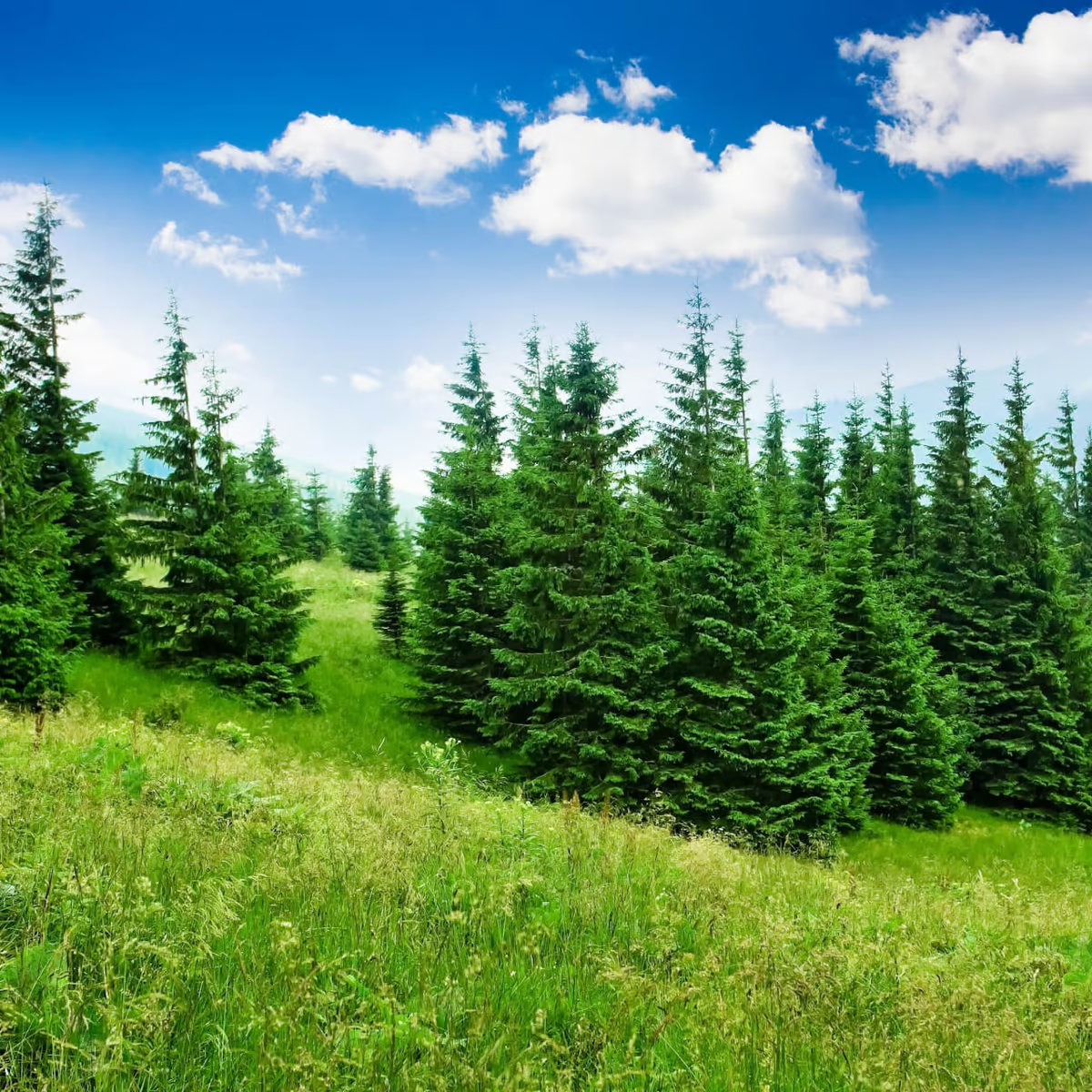
Perennials
Enhances soil with organic matter
Low-maintenance and drought-tolerant
Year-round green beauty and shade
Thrives in
ZONE 2ZONE 3ZONE 4ZONE 5ZONE 6ZONE 7ZONE 8ZONE 9Planting Season:
Nov-AprilWhen you add one plant to cart, it automatically adds the second one free on Bogo deals.
Pine trees are evergreen conifers characterized by needle-like leaves, conical or irregular shapes, and cone production. They are found in various species and are widely distributed across the world's forests.
Pinus is a family of conifers that includes at least 121 species. They're typically located in the Northern Hemisphere and can be as small as 10 feet or as large as 268 feet.
For the most part, they have a scaly, thick bark. The branches are highly tight spirals, which are often referred to as 'pseudo whorls.' These whorls typically grow one set of branches per year.
The cones, meanwhile, provide the plant with a source of reproduction. Both genders appear on each of these evergreens, offering a unique appearance. Cone hunters often collect the cones, which have been displayed in any number of baskets over the years.
The needles of these conifers can be sharp, but they're yet another thing that offers a visual feast for wildlife lovers. Interestingly, more mature ones do not typically have any needles. Instead, they only stick around for up to 40 years. While they're still there, though, they feed butterflies and moths.
The seed leaves come in a whorl of four to 24. Not only do these help distribute additional evergreens, but they also offer a food source to squirrels and a wide array of birds.
Although the extreme height range is listed above, most can grow to approximately 50-150 feet tall. Even more impressive, though, is their expected lifespan. Most will live anywhere from 100 to 1,000 years. However, the oldest known ones are around 4,800 years old! In other words, anytime you plant one of these evergreens, it'll likely be around for many subsequent generations.
Everyone who envisions their ideal Christmas tree immediately thinks of them. These evergreen types have just the right mixture of greenery and heavy-bearing limbs to make them suitable for holding all your Christmas decorations. Of course, you probably won't want to cut down these beautiful conifers, but you can still decorate them in your yard!
They Are Extremely Hardy
If you're looking for something beautiful and durable. You should definitely consider planting Pine Trees!

Height at Maturity
Over 25 Feet
Care
Pine trees prefer well-drained soil and moderate watering, letting the ground dry out between sessions. Trim only to clear dead branches. Look for pests like pine beetles and treat infestations promptly.
Plant Reproduction
Pine trees spread through wind-dispersed seeds from their pine cones.
Plant bare root trees during the dormant season in early spring or late fall (November through April). Dig the hole twice as wide as the roots so the soil is well-drained. Position the tree so the root flare is at or just above ground level. Fill the hole back with the soil you dug from and water. Maintain soil moisture, especially in the tree's early years, by providing deep, regular watering. Apply a 2-4 inch mulch away from the trunk at the base to retain moisture and suppress weeds. Prune trees during the first few seasons to establish strength and resilience, remove damaged branches, and continue maintenance pruning as the tree matures. Regularly inspect for pests and diseases and apply integrated pest management practices. Protect young trees from mechanical damage and extreme temperatures with tree guards, and stake them if necessary for support, removing the stakes after one or two years.
Shipping date depends on the date displayed and chosen when you order from the product's page.
We only accept returns on plants verified dead. If you think your plants have died, we offer a 1 year warranty, please use use this File a Claim Link to verify dead plants and start with return warranty process.





Natural Privacy Screen:
Their dense, tall growth makes pine trees excellent for creating privacy and blocking out unwanted views.
Air Quality Improvement:
Pine trees help purify the air by absorbing pollutants and releasing fresh oxygen, enhancing your outdoor environment.
Versatile Landscaping:
Pine trees add structure and beauty to various garden settings, serving as focal points, windbreaks, or natural borders.
Low Maintenance:
Pine trees are hardy and require minimal care, making them a hassle-free addition to any landscape.
Caring Tips
Each box contains detailed care instructions and information about your product. But here's the basics.
Care Tips
Pine trees prefer well-drained soil and moderate watering, letting the ground dry out between sessions. Trim only to clear dead branches. Look for pests like pine beetles and treat infestations promptly.
Light Requirements
Pine trees generally thrive in full sun, needing six hours of direct daylight daily. While they can tolerate partial shade, optimal growth and health are achieved with ample sunlight, making them best suited for open, sunny areas.
Hardy Planting Zones
2 • 3 • 4 • 5 • 6 • 7 • 8 • 9
How often should I water my plants?
How do I know if my plant is getting too much or too little sunlight?
What should I do to prepare my plants for winter?
What are the signs that my plant needs fertilizing?
How can I prevent pests from damaging my plants?
How do I choose the right plant for my climate zone?